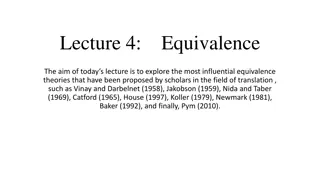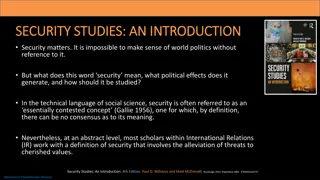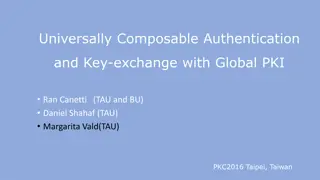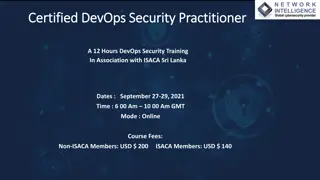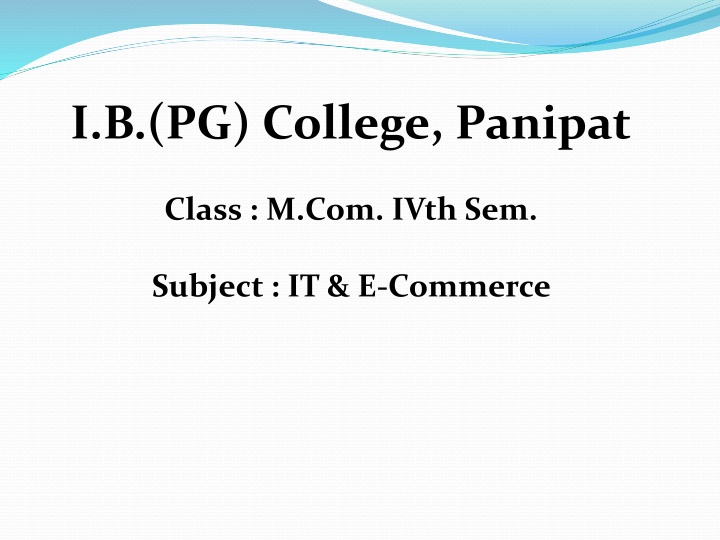
Essential Security Measures for E-Commerce Transactions
Discover the crucial security issues in E-Commerce and understand how to protect confidential information, ensure data integrity, authenticate users, and establish non-repudiation in online transactions. Learn about online frauds and privacy concerns in E-Commerce trading.
Download Presentation

Please find below an Image/Link to download the presentation.
The content on the website is provided AS IS for your information and personal use only. It may not be sold, licensed, or shared on other websites without obtaining consent from the author. If you encounter any issues during the download, it is possible that the publisher has removed the file from their server.
You are allowed to download the files provided on this website for personal or commercial use, subject to the condition that they are used lawfully. All files are the property of their respective owners.
The content on the website is provided AS IS for your information and personal use only. It may not be sold, licensed, or shared on other websites without obtaining consent from the author.
E N D
Presentation Transcript
I.B.(PG) College, Panipat Class : M.Com. IVth Sem. Subject : IT & E-Commerce
Introduction E-Commerce is defined as the buying and selling of products or services over electronic systems such as the Internet and to a lesser extent, other computer networks. It is generally regarded as the sales and commercial function of e- Business. There has been a massive increase in the level of trade conducted electronically since the widespread penetration of the Internet. A wide variety of commerce is conducted via e-Commerce, including electronic funds transfer, supply chain management, Internet marketing, online transaction processing, electronic data interchange (EDI), inventory management systems, and automated data collection systems. This massive increase in the uptake of e- Commerce has led to a new generation of associated security threats, but any e-Commerce system must meet four integral requirements:
Security Issues in E-Commerce Essential security requirements for safe electronic payments are: Confidently Information should be protected from eyes of unauthorized internal users, hackers ,and from being intercepted during transmission on communication networks by making it unintelligible to the attackers. Integrity accidentally or maliciously altered or destroyed during transmission. Ensuring that information will not be Authentication Both sender and recipient must prove their identities to each other . Non-Repudiation Proof is required that the exchanged information was indeed received.
Online Frauds There are many words used to describe fraud, for example scam, confidence trick, extortion, double-cross, cheat, hookwink etc. Online fraud can be perpetrated via spyware and other malware or sometimes more elaborately in conjunction with other channels such as email, telephone calls or letters. Types of Online Frauds: Account takeover Bank card and cheque fraud Business opportunity fraud Click fraud Identity fraud Internet auction fraud Loan Fraud Land banking fraud Vehicle matching frauds
Privacy Issues The privacy in E-Commerce means the protection of privacy of the parties involved in trading through e- commerce. While doing trading in e-commerce people are disclosing their personal information and those information are being proliferated and reaching to the hand of undesirable parties, and thereby increasing concern about privacy. (a)B2B Privacy Issues. (b)B2C Privacy Issues. (c) C2C Issues .
Security Schemes (or Security Solution) Main security schemes for electronic payment systems are: (i) Encryption and Decryption (ii) Digital Signature (iii)Security Certificate
Encryption Encryption is the process of translating plain text data (plaintext) into something that appears to be random and meaningless (ciphertext). Decryption Decryption is the process of converting ciphertext back to plaintext.
Digital Signature A digital signature is a mathematical technique used to validate the authenticity and integrity of a message, software or digital document. As the digital equivalent of a handwritten signature or stamped seal, a digital signature offers far more inherent security, and it is intended to solve the problem of tampering and impersonation in digital communications. Digital signatures can provide the added assurances of evidence of origin, identity and status of an electronic document, transaction or message and can acknowledge informed consent by the signer. In many countries, including the United States, digital signatures are considered legally binding in the same way as traditional document signatures.
Security Certificate Just as a passport is a universal way to establish your identity and gain entry to another country, a digital or security certificate provides identification in the electronic world. Certificate authorities (CAs) are organizations that issue security certificates. Much like the role of the passport office, the role of the CA is to validate the certificate holder s identify and to sign the certificate so that it cannot be forged or tempered with. Once a CA has signed a certificate, the holder can present the certificate to people, web sites, and network resources. A certificate is a unique digital ID that can be used to verify the identity of an individual. The certificate always includes a public key, the name of the entity it identifies, an expiration date, the name of the certificate authority (CA) that issued the certificate, the digital signature of the CA, and a serial numbers as shown in figure.









